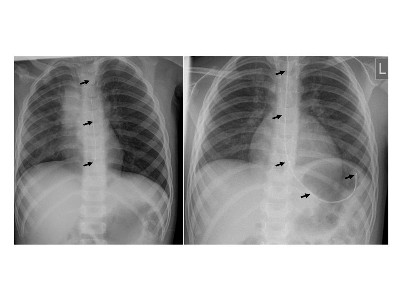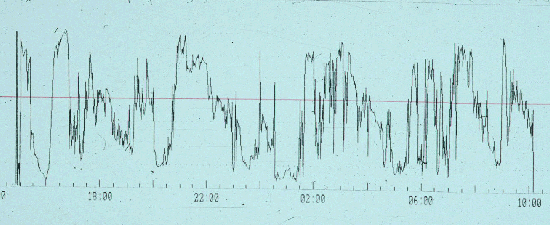- 0044 (0) 207 351 8754
- [email protected]
- Royal Brompton Hospital - London
A pH study is a test which measures whether stomach acid is coming back upwards into the oesophagus (the name for the food pipe which connects the throat to the stomach). This condition is known as gastro-oesophageal reflux. It can occur for a number of reasons, including a weak valve at the top of the stomach. Not all children with reflux vomit or retch but some notice fluid at the back of their mouth. Repeated reflux of stomach acid may cause your child’s oesophagus to become inflamed, which can be painful for them (like indigestion). The presence of stomach acid in the oesophagus can also make children cough and wheeze.
If your child is taking anti-reflux medication, you may need to stop some of the medicines before the test. Domperidone (Motilium) and rantidine (Zantac) need to be stopped 48 hours (two days) before the test. Omeprazole (Losec) needs to be stopped 72 hours (three days) before the test. Your child is not allowed to eat or drink anything for 1 hour before the test, and if sedation is necessary (see below) – nothing for 6 hours.
A small tube (known as a pH probe) is placed through the nose, past the back of the throat and into the oesophagus until the tip is sitting just above the stomach. The tube contains a probe that measures acid levels. Quite often we do a ‘dual probe’ study whereby the end of the tube is in the stomach itself, with readings taken from both the stomach and lower oesophagus.

Here are chest x-rays with pH probes in place. The probes are outlined by the arrows. On the left, is a single probe with the tip lying above the stomach. On the right is a dual probe with the tip in the stomach.
If your child is having a bronchoscopy at the same time, we will insert the tube under the same anaesthetic. Otherwise it is done on the ward, and depending on the child’s age and level of cooperation, sometimes sedation is given.
The technician will gently insert the pH probe. A drink of water sometimes makes it easier for the end of the tube to travel to the oesophagus (for those not having sedation). Inserting the tube does not hurt but is uncomfortable for a short while. On rare occasions it can take more than one attempt to insert the tube. This may be distressing for your child. It may make your child sneeze, cough, or retch, and can also tickle their throat and make their eyes water.
Please feel free to stop the procedure at any time if you have any concerns or wish to discuss further attempts.
Once the tube has been inserted, the technician will then tape it to your child’s cheek and then your child will have an x-ray to check it is in the right place. After we see the x-ray, sometimes the probe has to be slid further in or pulled back a little, to get it into exactly the right position
Occasionally younger children pull the probe out however well it is taped in place. Once everything is settled, the children usually tolerate the probe very well and can walk around, play, eat and sleep normally.
The other end of the tube and electrode are connected to a recording box. This will stay in place for 20-24 hours to record acid levels (pH<4). During this period, your child should eat and drink as usual, and you will need to fill in a diary. The person performing the test will explain how to do this.
The main risk with this test is that your child could have a nosebleed when the tube is inserted into the nostril. This tends to happen more with children who have nosebleeds anyway. There is a small risk of aspiration (leaking) of stomach contents into the lungs during the insertion of the tube. We therefore ask your child to have nothing to eat or drink for a minimum of one hour.
The main risk with this test is that your child could have a nosebleed when the tube is inserted into the nostril. This tends to happen more with children who have nosebleeds anyway. There is a small risk of aspiration (leaking) of stomach contents into the lungs during the insertion of the tube. We therefore ask your child to have nothing to eat or drink for a minimum of one hour.
all and takes a few moments only. If your child does not have any other tests booked, they will be able to go home. The results are analysed on a computer and are usually available within 24 hours.

Result of a pH study showing severe reflux. Acidic levels are shown when the trace is below the red line and in this case there was acid in the oesophagus for about a third of the time.
A pH study is a test which measures whether stomach acid is coming back upwards into the oesophagus (the name for the food pipe which connects the throat to the stomach). This condition is known as gastro-oesophageal reflux. It can occur for a number of reasons, including a weak valve at the top of the stomach. Not all children with reflux vomit or retch but some notice fluid at the back of their mouth. Repeated reflux of stomach acid may cause your child’s oesophagus to become inflamed, which can be painful for them (like indigestion). The presence of stomach acid in the oesophagus can also make children cough and wheeze.
If your child is taking anti-reflux medication, you may need to stop some of the medicines before the test. Domperidone (Motilium) and rantidine (Zantac) need to be stopped 48 hours (two days) before the test. Omeprazole (Losec) needs to be stopped 72 hours (three days) before the test. Your child is not allowed to eat or drink anything for 1 hour before the test, and if sedation is necessary (see below) – nothing for 6 hours.
A small tube (known as a pH probe) is placed through the nose, past the back of the throat and into the oesophagus until the tip is sitting just above the stomach. The tube contains a probe that measures acid levels. Quite often we do a ‘dual probe’ study whereby the end of the tube is in the stomach itself, with readings taken from both the stomach and lower oesophagus.

Here are chest x-rays with pH probes in place. The probes are outlined by the arrows. On the left, is a single probe with the tip lying above the stomach. On the right is a dual probe with the tip in the stomach.
If your child is having a bronchoscopy at the same time, we will insert the tube under the same anaesthetic. Otherwise it is done on the ward, and depending on the child’s age and level of cooperation, sometimes sedation is given.
The technician will gently insert the pH probe. A drink of water sometimes makes it easier for the end of the tube to travel to the oesophagus (for those not having sedation). Inserting the tube does not hurt but is uncomfortable for a short while. On rare occasions it can take more than one attempt to insert the tube. This may be distressing for your child. It may make your child sneeze, cough, or retch, and can also tickle their throat and make their eyes water.
Please feel free to stop the procedure at any time if you have any concerns or wish to discuss further attempts.
Once the tube has been inserted, the technician will then tape it to your child’s cheek and then your child will have an x-ray to check it is in the right place. After we see the x-ray, sometimes the probe has to be slid further in or pulled back a little, to get it into exactly the right position
Occasionally younger children pull the probe out however well it is taped in place. Once everything is settled, the children usually tolerate the probe very well and can walk around, play, eat and sleep normally.
The other end of the tube and electrode are connected to a recording box. This will stay in place for 20-24 hours to record acid levels (pH<4). During this period, your child should eat and drink as usual, and you will need to fill in a diary. The person performing the test will explain how to do this.
The main risk with this test is that your child could have a nosebleed when the tube is inserted into the nostril. This tends to happen more with children who have nosebleeds anyway. There is a small risk of aspiration (leaking) of stomach contents into the lungs during the insertion of the tube. We therefore ask your child to have nothing to eat or drink for a minimum of one hour.
The main risk with this test is that your child could have a nosebleed when the tube is inserted into the nostril. This tends to happen more with children who have nosebleeds anyway. There is a small risk of aspiration (leaking) of stomach contents into the lungs during the insertion of the tube. We therefore ask your child to have nothing to eat or drink for a minimum of one hour.
all and takes a few moments only. If your child does not have any other tests booked, they will be able to go home. The results are analysed on a computer and are usually available within 24 hours.

Result of a pH study showing severe reflux. Acidic levels are shown when the trace is below the red line and in this case there was acid in the oesophagus for about a third of the time.
© Dr. Ian Balfour-Lynn
Powered by LondonWeb
Designed by CrestanaDS